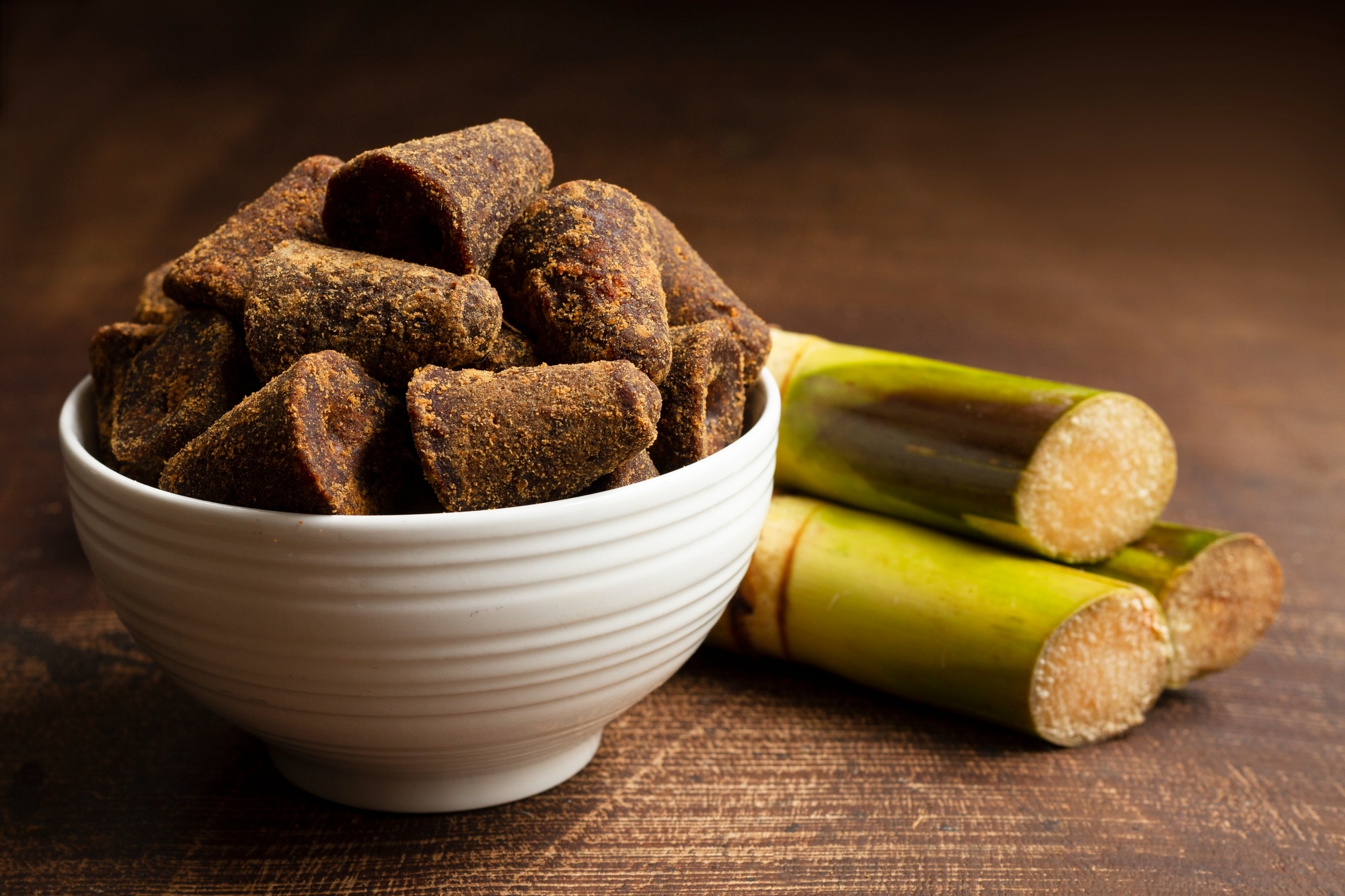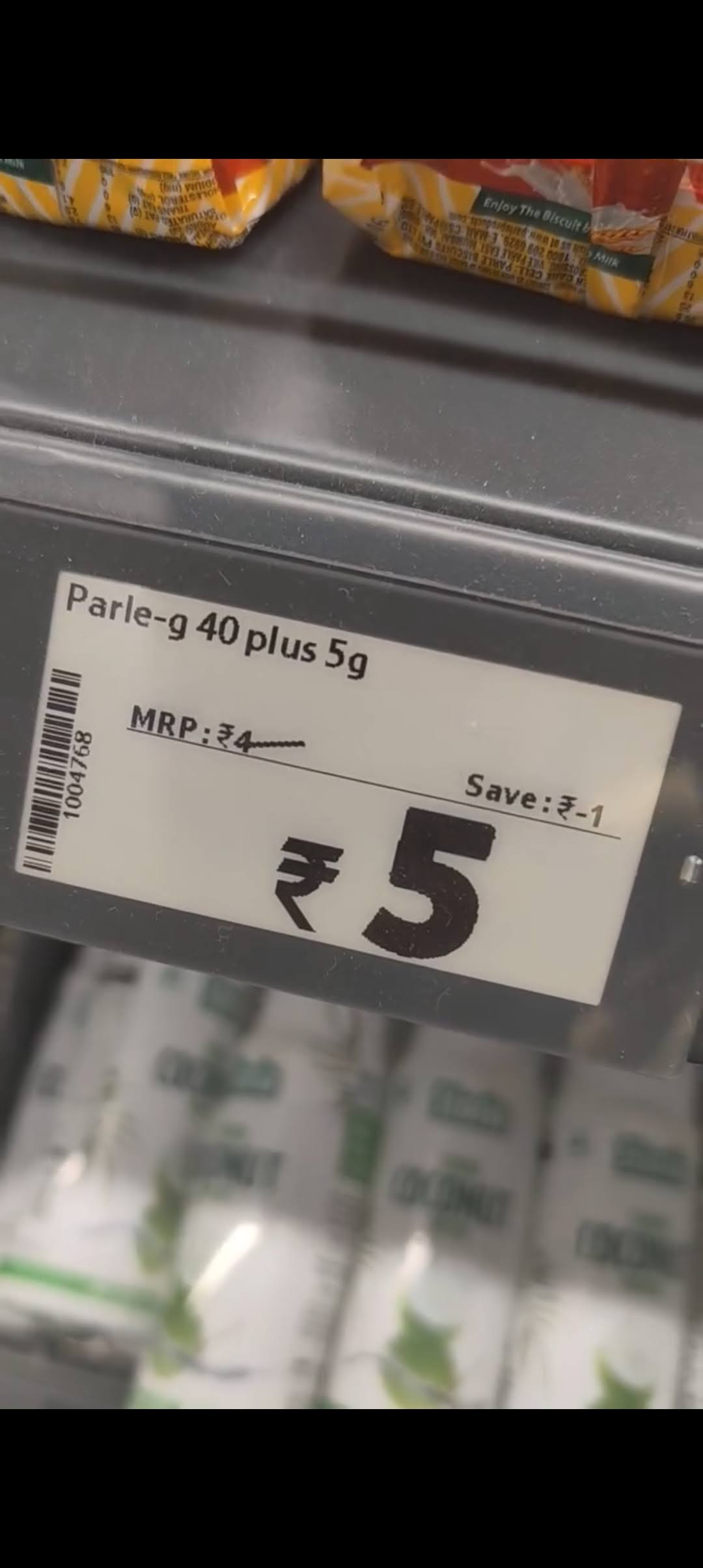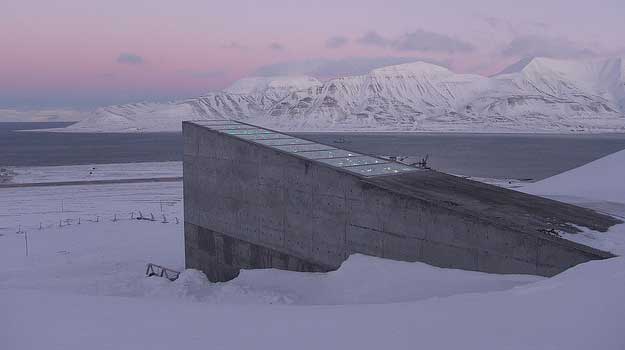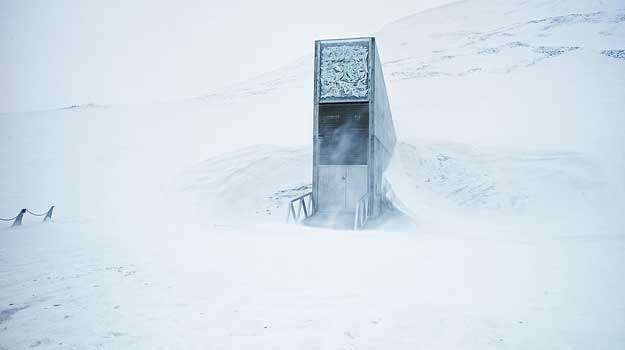Way up on a remote island, closest to the North Pole, lies the world’s largest seed storage. From different countries, crates of seeds of the most prized crops in the world are shipped here for safe and secure storage in a cold vault. Set in permafrost deep inside a mountain, the Svalbard Seed Vault was launched in 2008 by the Norwegian government.What was the need? There are more than 1700 regional gene banks across the globe that hold food crops for safekeeping, making them available to farmers in time of need. Yet, many of these are exposed to natural disasters, war, damage and destruction. They are also vulnerable to lack of funding or poor management that translates into inadequate facilities which can ruin the entire variety. We may lose biodiversity and not necessarily due to a global catastrophe. These pressing problems and the imminent danger to crops due to climate change sparked the need for a global seed vault that could serve as a backup storage facility. Indigenous crops are vanishing at an astonishing rate with changes in local weather patterns, new hybrids or misuse. The vault gives us hope to save as many species as possible.(World to Face Acute Food Shortage by 2050: US Expert)
Why Svalbard? Located halfway between mainland Norway and the North Pole, Svalbard is ideal for several reasons. It’s the farthest north that anyone can fly which makes it isolated yet accessible. The region has a stable geology and humidity levels are low. Most of the island is glacial but around the 1980s, Nordic countries began using an abandoned mine shaft as a safety stock for seeds. This was the first time the idea of using permafrost as a cold storage was floated.Permafrost is permanently frozen soil, sediment, or rock. The ground must remain at or below 0°C for at least two years in order to be considered permafrost. The new building was designed by Peter W. Söderman and is blasted inside the frozen mountain base, 130 meters into the rock, with only the entrance lobby that is visible. This keeps the vault safe from the outside world and the permafrost of the mountain provides natural cold conditions to ensure that the seeds are protected for decades to come.
Frozen surroundings reduce the reliance on mechanical refrigeration. The vault was built to be disaster proof and earthquake resistant, secured against external damage (even an asteroid strike!) and climate change to last for an infinite lifetime. Situated well above the sea-level, the frozen depository is surrounded by snowcapped slopes overlooking the stillness of beautiful blue waters and narrow valleys.The roof of the building is adorned with artwork created by Dyveke Sanne. The artist used highly reflective stainless steel triangles of various sizes along with mirror and prisms that catch and reflect light. It has a stunning view that makes the building glow under the sun and even on a dark gloomy day.

(Luxury Food Shortage Scares - Should we Believe the Warnings?)The vault holds more than 860,000 samples of varieties of food crops like beans, wheat, rice and about 4000 plant species. With a capacity to store about 2.5 billion seeds, it is home to the world’s largest collection of crop diversity. It preserves all important crop varieties that are available in the world today. These are duplicates of the seed samples originating from almost every country across the globe. Ranging from maize, rice, jowar and wheat from Africa and Asia to European and South American staples like eggplant, lettuce and potato.The seeds are sealed in custom made three-ply foil packages that are stored inside boxes and placed on various shelves inside the vault. The vault needs to maintain a temperature of -18 degree Celsius at all times to limit oxygen access and slow metabolic activity. These samples remain the property of the gene banks and countries that deposit them.

The vault is maintained by Cary Fowler of the Global Crop Diversity Trust in partnership with the Norwegian government and the Nordic Genetic Resources Center. The guardians of the vault focus on safeguarding as many unique crops as they can in order to offer future generations a steady food supply while the world struggles with the challenges of climate change and rapid population growth. Governments from Washington to India, store back-up copies of their most precious plant resources here. In an event of crop failure or destruction, the world could bank on the Svalbard Seed Vault to breed new varieties.Less than eight years of inception, the vault plans to stage the first ‘return-to-sender’ project in the war-torn country of Syria in the Middle East where the international center is under great threat due to the ongoing crisis.The Svalbard Seed Vault presents an undeniably fascinating story celebrating years of conserving our inheritance and what's left of it. The technology is state of art but the bigger question that it faces is if it can really feed the future or it is merely a media sensation? Time will tell.All images have been sourced from Flickr/ Landbruks- og matdepartementet
Why Svalbard? Located halfway between mainland Norway and the North Pole, Svalbard is ideal for several reasons. It’s the farthest north that anyone can fly which makes it isolated yet accessible. The region has a stable geology and humidity levels are low. Most of the island is glacial but around the 1980s, Nordic countries began using an abandoned mine shaft as a safety stock for seeds. This was the first time the idea of using permafrost as a cold storage was floated.Permafrost is permanently frozen soil, sediment, or rock. The ground must remain at or below 0°C for at least two years in order to be considered permafrost. The new building was designed by Peter W. Söderman and is blasted inside the frozen mountain base, 130 meters into the rock, with only the entrance lobby that is visible. This keeps the vault safe from the outside world and the permafrost of the mountain provides natural cold conditions to ensure that the seeds are protected for decades to come.
Frozen surroundings reduce the reliance on mechanical refrigeration. The vault was built to be disaster proof and earthquake resistant, secured against external damage (even an asteroid strike!) and climate change to last for an infinite lifetime. Situated well above the sea-level, the frozen depository is surrounded by snowcapped slopes overlooking the stillness of beautiful blue waters and narrow valleys.The roof of the building is adorned with artwork created by Dyveke Sanne. The artist used highly reflective stainless steel triangles of various sizes along with mirror and prisms that catch and reflect light. It has a stunning view that makes the building glow under the sun and even on a dark gloomy day.
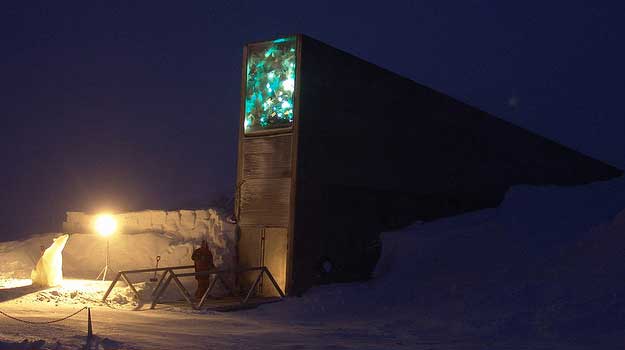
(Luxury Food Shortage Scares - Should we Believe the Warnings?)The vault holds more than 860,000 samples of varieties of food crops like beans, wheat, rice and about 4000 plant species. With a capacity to store about 2.5 billion seeds, it is home to the world’s largest collection of crop diversity. It preserves all important crop varieties that are available in the world today. These are duplicates of the seed samples originating from almost every country across the globe. Ranging from maize, rice, jowar and wheat from Africa and Asia to European and South American staples like eggplant, lettuce and potato.The seeds are sealed in custom made three-ply foil packages that are stored inside boxes and placed on various shelves inside the vault. The vault needs to maintain a temperature of -18 degree Celsius at all times to limit oxygen access and slow metabolic activity. These samples remain the property of the gene banks and countries that deposit them.
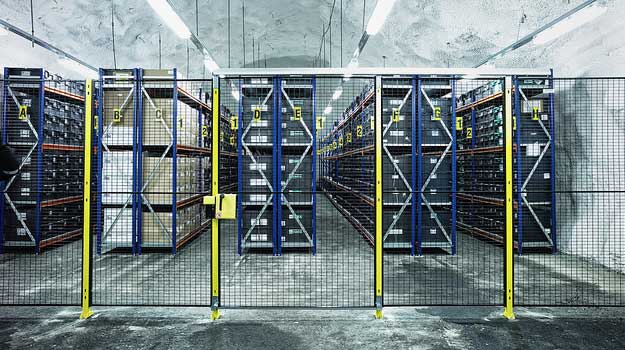
The vault is maintained by Cary Fowler of the Global Crop Diversity Trust in partnership with the Norwegian government and the Nordic Genetic Resources Center. The guardians of the vault focus on safeguarding as many unique crops as they can in order to offer future generations a steady food supply while the world struggles with the challenges of climate change and rapid population growth. Governments from Washington to India, store back-up copies of their most precious plant resources here. In an event of crop failure or destruction, the world could bank on the Svalbard Seed Vault to breed new varieties.Less than eight years of inception, the vault plans to stage the first ‘return-to-sender’ project in the war-torn country of Syria in the Middle East where the international center is under great threat due to the ongoing crisis.The Svalbard Seed Vault presents an undeniably fascinating story celebrating years of conserving our inheritance and what's left of it. The technology is state of art but the bigger question that it faces is if it can really feed the future or it is merely a media sensation? Time will tell.All images have been sourced from Flickr/ Landbruks- og matdepartementet
Advertisement




